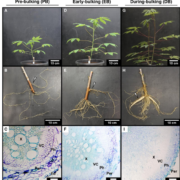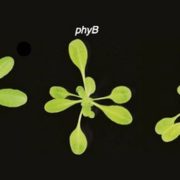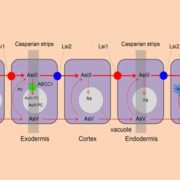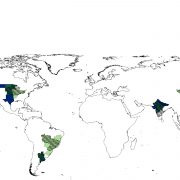Lignin Bioengineering in Poplar
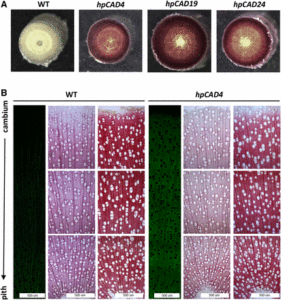 Lignified cell walls constitute an important renewable and sustainable feedstock for the production of fermentable sugars, biochemicals, and biomaterials. In biorefineries, plant cell wall polysaccharides are depolymerized into simple monomeric sugars, a process called saccharification. These sugars are subsequently fermented to ethanol or other compounds by microbes. However, the complex chemical composition and physical structure of plant cell walls hampers the efficient hydrolysis of lignocellulose. One of the major factors contributing to biomass recalcitrance of this sort is the presence of lignin, an aromatic polymer that provides strength and hydrophobicity to the cell wall. Lignin hinders the efficient enzymatic depolymerization of cellulose and hemicellulose into fermentable sugars by immobilizing the hydrolytic enzymes and physically limiting the access to their polysaccharide substrates. Although a number of pretreatments have been developed to remove lignin and consequently lower biomass recalcitrance, the pretreatment is still a relatively expensive step in the conversion process. In this regard, lignin bioengineering (e.g. engineering plants that either accumulate less lignin or produce lignin polymers more amenable to chemical degradation) holds promise to tailor plants with reduced biomass recalcitrance. Caffeoyl shikimate esterase (CSE) plays an essential role in lignin biosynthesis in Arabidopsis (Arabidopsis thaliana) and Medicago truncatula. Van Acker et al. (10.1104/pp.17.00834) now report that the down-regulation of CSE in hybrid poplar (Populus tremula X Populus alba) resulted in up to 25% reduced lignin deposition, increased levels of p-hydroxyphenyl units in the lignin polymer, and a relatively higher cellulose content. The reduced lignin amount combined with the relative increase in cellulose content in the CSE down-regulated lines resulted in up to 62% more glucose released per plant upon limited saccharification when no pretreatment was applied and by up to 86% and 91% when acid and alkaline pretreatments were used. These results show that CSE is not only important for the lignification process in poplar but is also a promising target for the development of improved lignocellulosic biomass crops for biorefineries
Lignified cell walls constitute an important renewable and sustainable feedstock for the production of fermentable sugars, biochemicals, and biomaterials. In biorefineries, plant cell wall polysaccharides are depolymerized into simple monomeric sugars, a process called saccharification. These sugars are subsequently fermented to ethanol or other compounds by microbes. However, the complex chemical composition and physical structure of plant cell walls hampers the efficient hydrolysis of lignocellulose. One of the major factors contributing to biomass recalcitrance of this sort is the presence of lignin, an aromatic polymer that provides strength and hydrophobicity to the cell wall. Lignin hinders the efficient enzymatic depolymerization of cellulose and hemicellulose into fermentable sugars by immobilizing the hydrolytic enzymes and physically limiting the access to their polysaccharide substrates. Although a number of pretreatments have been developed to remove lignin and consequently lower biomass recalcitrance, the pretreatment is still a relatively expensive step in the conversion process. In this regard, lignin bioengineering (e.g. engineering plants that either accumulate less lignin or produce lignin polymers more amenable to chemical degradation) holds promise to tailor plants with reduced biomass recalcitrance. Caffeoyl shikimate esterase (CSE) plays an essential role in lignin biosynthesis in Arabidopsis (Arabidopsis thaliana) and Medicago truncatula. Van Acker et al. (10.1104/pp.17.00834) now report that the down-regulation of CSE in hybrid poplar (Populus tremula X Populus alba) resulted in up to 25% reduced lignin deposition, increased levels of p-hydroxyphenyl units in the lignin polymer, and a relatively higher cellulose content. The reduced lignin amount combined with the relative increase in cellulose content in the CSE down-regulated lines resulted in up to 62% more glucose released per plant upon limited saccharification when no pretreatment was applied and by up to 86% and 91% when acid and alkaline pretreatments were used. These results show that CSE is not only important for the lignification process in poplar but is also a promising target for the development of improved lignocellulosic biomass crops for biorefineries


